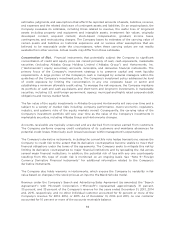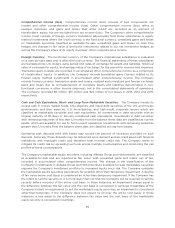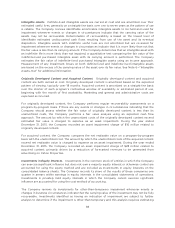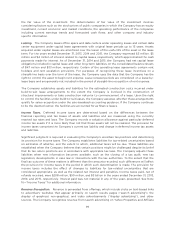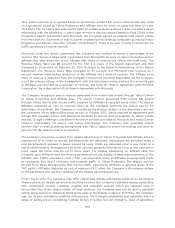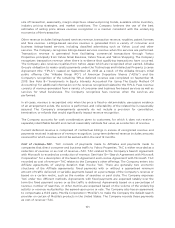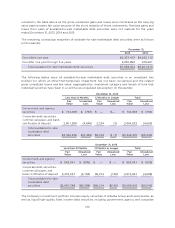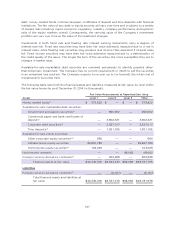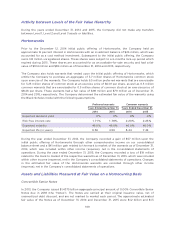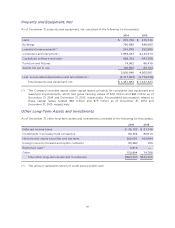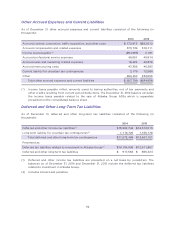Yahoo 2015 Annual Report Download - page 108
Download and view the complete annual report
Please find page 108 of the 2015 Yahoo annual report below. You can navigate through the pages in the report by either clicking on the pages listed below, or by using the keyword search tool below to find specific information within the annual report.noncurrent in a classified balance sheet. As a result, each jurisdiction will now only have one net
noncurrent deferred tax asset or liability. This ASU is effective for annual reporting periods beginning
after December 15, 2016, including interim periods within that reporting period, and entities are
permitted to apply either prospectively or retrospectively; early adoption is permitted. The Company
evaluated the effects of the ASU 2015-17 and elected to early adopt the ASU during the fourth
quarter of 2015. The ASU was applied retrospectively to provide a consistent financial statement
presentation for all deferred tax assets and liabilities for the years ended December 31, 2014 and
December 31, 2015. To conform to the current period presentation, the Company reclassified $253
million and $8 million, respectively, which were previously included in prepaid expense and other
current assets and other accrued expenses and current liabilities for the year ended December 31,
2014. As a result of the reclassifications, year-end balances of other long-term assets and investments
increased by $9 million and deferred and other long-term tax liabilities decreased by $236 million for
the year ended December 31, 2014.
In January 2016, the FASB issued ASU No. 2016-01, “Financial Instruments-Overall: Recognition and
Measurement of Financial Assets and Financial Liabilities”. The new standard principally affects
accounting standards for equity investments, financial liabilities where the fair value option has been
elected, and the presentation and disclosure requirements for financial instruments. Upon the
effective date of the new standards, all equity investments in unconsolidated entities, other than
those accounted for using the equity method of accounting, will generally be measured at fair value
through earnings. There will no longer be an available-for-sale classification and therefore, no
changes in fair value will be reported in other comprehensive income for equity securities with readily
determinable fair values. The new guidance on the classification and measurement will be effective
for public business entities in fiscal years beginning after December 15, 2017, including interim periods
within those fiscal years and early adoption is permitted. The Company is in the process of evaluating
the impact of the adoption of ASU 2016-01 on the consolidated financial statements and currently
anticipates the new guidance would significantly impact its Consolidated Statements of Operations
and Consolidated Statements of Comprehensive Income as the Company’s marketable equity
securities, due primarily to Alibaba Group and Hortonworks, are currently classified as available-for-
sale and are reported at fair value, with unrealized gains and losses, net of tax, recorded in
accumulated other comprehensive income.
In February 2016, the FASB issued ASU 2016-02, “Leases” which, for operating leases, requires a
lessee to recognize a right-of-use asset and a lease liability, initially measured at the present value of
the lease payments, in its balance sheet. The standard also requires a lessee to recognize a single
lease cost, calculated so that the cost of the lease is allocated over the lease term, on a generally
straight-line basis. The ASU is effective for public companies for fiscal years beginning after
December 15, 2018, including interim periods within those fiscal years. Early adoption is permitted.
The Company is currently evaluating the effects that the adoption of ASU 2016-02 will have on the
Company’s consolidated financial statements and anticipates the new guidance will significantly
impact its consolidated financial statements given the Company has a significant number of leases.
104


